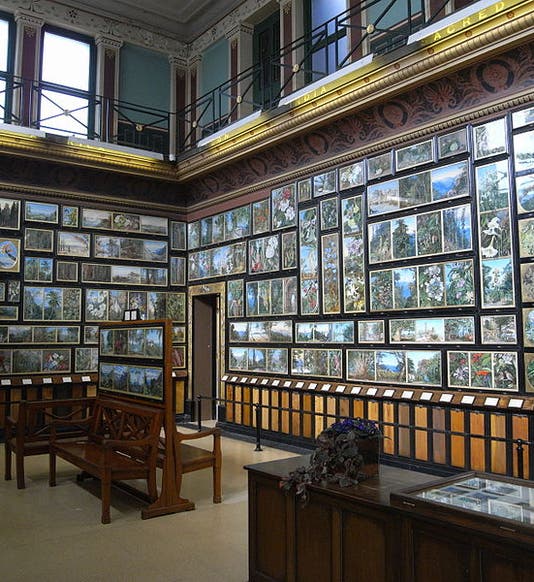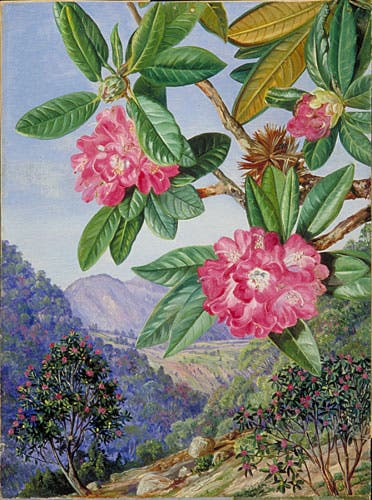Scientist of the Day - Marianne North
Marianne North, a botanical painter, was born Oct. 24, 1830. Miss North was a remarkable woman. She took up painting relatively late, making her first trip to paint plants in the wild when she visited Canada in 1871, at the age of 40. Over the course of the next 14 years, she visited every continent, often travelling by herself, and she painted landscapes and flowers in Brazil, South Africa, Sumatra, India, Australia, and Japan, to name just a few.
By 1879, she had accumulated enough oil paintings to begin to wonder what to do with them, and she worked out a deal with Joseph Hooker, head of Kew Gardens, whereby she would donate her paintings to Kew and have a building designed to house them, and Kew would become the guardian of the collection.
The Marianne North gallery was completed in her lifetime, in 1882, and it is still there—one of the great secrets of this world-famous botanical garden. Every visitor says that there is no way to prepare oneself for the sensation of entering the gallery and seeing 833 beautiful paintings, packed on the walls like postage stamps on a fifty-pound package (first image). Every one of Marianne’s paintings is available online at the Kew Gardens website. The second image above is her most famous painting, a pitcher plant from Sarawak, which she painted in 1876. After she showed the painting around, it was determined that this was a brand new species, so a collector was sent out, a specimen was taken back to Kew and propagated, and in 1881, Hooker named it Nepenthes northiana—Miss North’s pitcher plant.
The other paintings shown here are a South Indian rhododendron (third image) and a fruiting clove in the Seychelles (fourth image).
Dr. William B. Ashworth, Jr., Consultant for the History of Science, Linda Hall Library and Associate Professor, Department of History, University of Missouri-Kansas City. Comments or corrections are welcome; please direct to ashworthw@umkc.edu.









